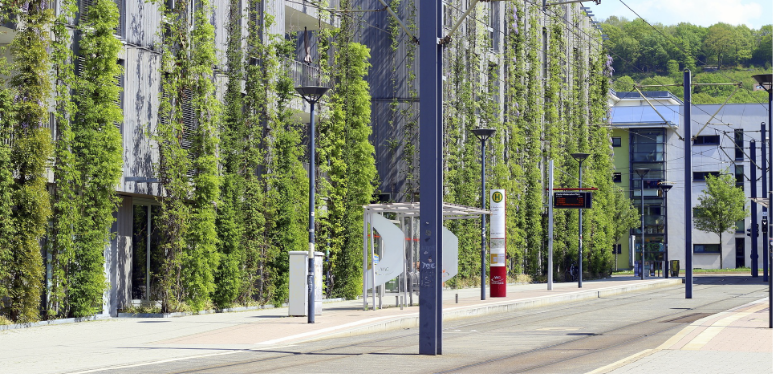Strategic objectives

The EACS sets 5 strategic objectives which, in line with the priorities of the European Urban Agenda and the strategic objectives of the Spanish Urban Agenda, identify factors specific to the Region of Murcia, obtained as a result of a SWOT analysis and diagnostic process carried out with the participation of the regional players involved.
Link: EACS - Strategic Objectives and Lines of Action (PDF file 1.39MB)

Progress towards a culture of sustainability in the building process.
There is a need to spread a new culture of sustainable building to all the actors involved in the process. Citizens need to know the benefits these buildings bring, both to themselves, and to the environment. This benefit goes beyond an improvement in construction quality or an increase in interior comfort.
Most of the time there is a considerable economic saving to be had from the use of climate control systems (air conditioning and heating), since the buildings are more protected from adverse weather conditions, so there is less need to activate those systems.
One of the objectives of this strategy will therefore be to spread this new culture, through specific outreach activities, information and awareness campaigns, and specific training for technical actors involved in the design of buildings and cities, and their execution.
Promote initiatives towards more sustainable urban planning and building models.
It is becoming necessary to move towards more sustainable building and urban planning models. For this, research and development are determining factors where there is a desire to establish a new economic model based on circularity. It is necessary to develop working techniques and models that ensure the correct behaviour of the buildings, in ways that are long-lasting and sustainable for the environment. The Region of Murcia has organisations that are capable of driving innovation in the field of construction. However, its limited resources represent a significant barrier for the development of innovative solutions adapted to the peculiar climate characteristics of the region, which are so different from those in other parts of Spain, and even more so from central and northern Europe.
Furthermore, we need to promote passive solutions, material technologies and construction systems that contribute to the circularity of the building process and to saving water. Most of the time there is a certain amount of resistance to change, to using new materials and technologies, or secondary raw materials based on recovery of C&DW, which have not yet been sufficiently tested, including among technical agents.
Introduce the Building Life Cycle Assessment.
The life cycle assessment of buildings is put forward as the essential tool to assess a building's degree of sustainability, and to be able to compare buildings. However, this analysis is complex and requires training for technical staff involved, therefore promoting it is an essential objective during this transition towards a circular economy in the sector. Furthermore, the criteria for assessing sustainability in public procurement processes must also be based on this methodology.
Increase the durability of buildings and their capacity to adapt to new uses under sustainability criteria.
The most generalised culture encourages new construction of buildings as opposed to the more sustainable recovery of existing building stock. This constitutes a significant barrier to developing a new construction model based on the circular economy. It is therefore a strategic objective to support the energy renovation of buildings, acting not just on their enclosure, but also on their fittings, and incorporating systems that make the most of renewable resources, as well as promoting proper maintenance of the buildings in order to prolong their useful life and their readaptation to new uses.
Encourage more flexible urban planning models and promote urban planning policies based on multi-level governance that favours greater sustainability.
Inefficient urban planning will lead, irretrievably, to difficulties in applying the building sustainability criteria laid out here. Therefore, the most sustainable building solutions have their starting point in urban planning that is more flexible and less prescriptive, which allows innovative designs to be incorporated, guaranteeing and supporting access to solar radiation and the urban renaturalisation that is so needed. Multilevel governance schemes and the participation of the actors involved are a practice that has given excellent results in experiments carried out.
The EACS therefore sets itself the objective of progressing towards these models of urban planning that, with greater flexibility, allow for the construction of buildings with a level of sustainability that is difficult to achieve within current planning policy.